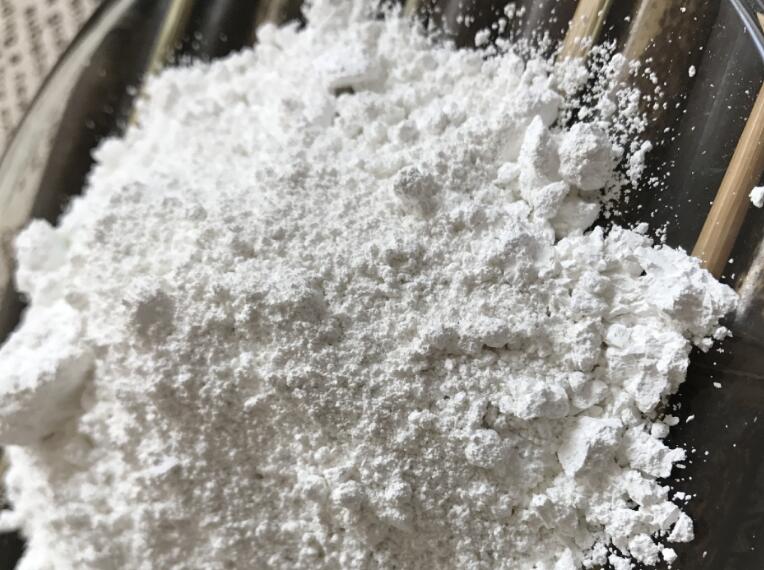Study on thermal degradation performance of magnesium hydroxide flame retardant epoxy resin

Epoxy resins have been widely used in aerospace, electronics, automobile manufacturing and other fields due to their excellent mechanical properties, electrical insulation properties and chemical stability. However, epoxy resins themselves have high flammability, which limits their use in some applications with strict requirements on flame retardancy. Magnesium hydroxide (Mg(OH)₂), as a halogen-free flame retardant, has great potential in improving the flame retardancy of epoxy resins due to its high flame retardant efficiency, non-toxicity, smokelessness and non-corrosiveness.
The effect of magnesium hydroxide on the thermal degradation performance of epoxy resins was explored. By optimizing the addition amount of magnesium hydroxide and the surface modification method, the flame retardancy of epoxy resins was improved, and its thermal degradation mechanism was analyzed.
Experimental Materials and Methods
Experimental Materials
Epoxy resin: as a matrix material.
Curing agent: such as diaminodiphenylmethane (DDM) or isocyanate curing agent.
Magnesium hydroxide: as a flame retardant.
Silane coupling agent: such as γ-aminopropyltriethoxysilane (APTES), used for surface modification of magnesium hydroxide.
Other additives: such as plasticizers, accelerators, etc.
Experimental steps
Modification of magnesium hydroxide:
Disperse magnesium hydroxide in deionized water and add an appropriate amount of silane coupling agent.
Stir for several hours at a certain temperature (such as 60°C) to allow the silane coupling agent to react chemically with the surface of magnesium hydroxide.
Modified magnesium hydroxide is obtained by centrifugal separation, washing, drying and other steps.
Preparation of composite materials:
Mix the modified magnesium hydroxide with epoxy resin in a certain proportion.
Add an appropriate amount of curing agent and other additives and mix evenly.
Prepare composite material samples by casting, curing and other steps.
Thermal degradation performance test:
Thermogravimetric analysis (TGA): Perform thermogravimetric analysis in nitrogen or air, record the weight loss curve at different temperatures, and analyze the thermal stability of the composite material.
Differential scanning calorimetry (DSC): Test the exothermic behavior of the composite material during thermal degradation and analyze its thermal degradation kinetics.
Thermomechanical analysis (TMA): Test the dimensional change of the composite material during thermal degradation and analyze its thermal expansion coefficient.
Flame retardant performance test:
Limiting oxygen index (LOI): Test the flame retardant performance of the composite material and record its limiting oxygen index.
Vertical burning test (UL-94): Evaluate the flame retardant grade of the composite material.
Microstructure analysis:
Scanning electron microscope (SEM): Observe the micromorphology of the composite material and understand the dispersion of magnesium hydroxide in the epoxy resin matrix.
X-ray diffraction (XRD): Analyze the crystalline structure of magnesium hydroxide in the composite material.
Results and discussion
Thermal degradation performance:
Thermal stability: TGA results show that with the increase of magnesium hydroxide addition, the initial decomposition temperature of the composite material increases, indicating that the addition of magnesium hydroxide improves the thermal stability of epoxy resin.
Thermal degradation kinetics: DSC results show that the addition of magnesium hydroxide causes the thermal degradation peak of the composite material to move to the high temperature zone, indicating that magnesium hydroxide can play a flame retardant role at high temperatures.
Thermal expansion coefficient: TMA results show that after magnesium hydroxide modification, the thermal expansion coefficient of the composite material decreases, which helps to improve its dimensional stability.
Flame retardant properties:
Limiting oxygen index (LOI): The LOI value of the modified magnesium hydroxide composite material is significantly higher than that of the unmodified material, indicating that its flame retardant properties have been significantly improved.
Vertical burning test (UL-94): The modified magnesium hydroxide composite material showed a better flame retardant grade in the UL-94 test, indicating that its flame retardant effect is excellent.
Microstructure:
Dispersion: SEM results show that the modified magnesium hydroxide has good dispersion in the epoxy resin matrix and forms a relatively uniform distribution.
Crystal phase structure: XRD results show that the modified magnesium hydroxide maintains a good crystal phase structure in the composite material without obvious crystal phase transformation.
The surface modification of magnesium hydroxide by silane coupling agent and its addition to epoxy resin can significantly improve the thermal degradation performance and flame retardant properties of the composite material. The addition of modified magnesium hydroxide not only improves the thermal stability of epoxy resin, but also improves its flame retardant effect. This study provides new ideas and technical means for the development of high-performance flame-retardant epoxy resin composite materials.








